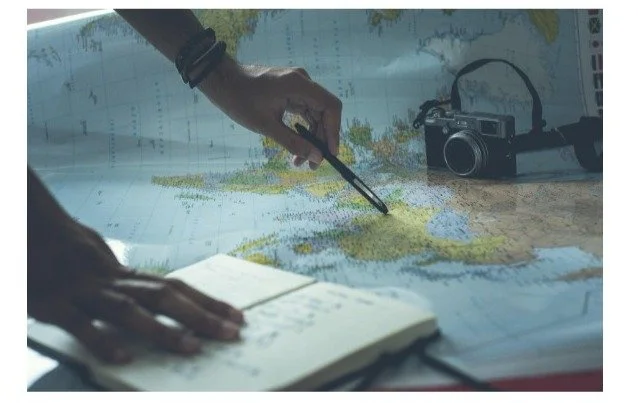From Takeoff to Touchdown: How Airlines Keep You Safe on Long-Haul Flights
Long-haul flights are one of modern travel’s great conveniences—covering thousands of kilometers in one continuous glide through the sky. Whether you're headed across oceans to visit family, explore a faraway country, or close an international business deal, spending 8 to 15 hours in the air is now a regular part of life for millions of travelers.
Still, somewhere between the third movie on your seatback screen and that strangely satisfying mid-flight meal, a little voice might whisper: “How exactly is all of this kept safe?”
You’re not alone in wondering. The good news is that aviation is not just safe—it’s impressively prepared. From pre-flight maintenance to the life rafts you probably didn’t know were tucked away above your head, there’s a system in place for nearly every imaginable scenario. Here’s a deep dive into how airlines make sure your long-haul journey is as secure as it is smooth.
Rigorous Pre-Flight Checks
Let’s start before you even buckle up.
Every long-haul flight, whether it’s a commercial plane or private jet, undergoes extensive pre-flight inspections. Maintenance crews comb through the aircraft, checking everything from hydraulics and fuel lines to flight control surfaces and software diagnostics. These aren't just visual inspections—they involve checklists longer than your grocery list and specialized tools to detect the smallest faults.
Planes are also subject to routine heavy maintenance checks (known as A, B, C, and D checks), where they're essentially taken apart and reassembled, often over several weeks. So, when you board a long-haul aircraft, you're walking into a machine that's been obsessively monitored and maintained, probably more than your car ever will be.
Pilots, too, don’t just show up and wing it. They go through pre-flight briefings where they analyze the route, weather, potential alternates for diversion, and aircraft-specific technical updates. All of this happens while you’re still trying to find your gate.
Highly Trained Pilots and Crew
The people up front—the pilots—undergo rigorous training that never really stops. Commercial pilots need thousands of flight hours before even qualifying to command long-haul flights. But that’s just the start.
They regularly return to simulators to practice every kind of emergency: engine failure, bird strikes, depressurization, and yes—even water landings. These simulations aren’t games—they recreate the physical feel and challenge of real emergencies in real time.
Cabin crew members go through intensive safety and emergency training as well. You might see them as the ones serving drinks, but they’re also trained first responders. They learn how to evacuate passengers in under 90 seconds, how to administer CPR and use defibrillators, how to control in-flight fires, and how to handle unruly passengers without breaking a sweat.
So next time you see your flight attendant give a calm smile while maneuvering a rickety drinks cart, just know they could also operate a life raft, stop a nosebleed, and organize an emergency landing—all while staying composed.
Hidden Safety Systems in the Cabin
There’s more safety around you than you probably realize. Let’s look at what’s hiding in plain sight.
Oxygen masks are standard on all pressurized aircraft, and they deploy automatically in the unlikely event of cabin depressurization. (Pro tip: secure your own mask before helping others, because you have about 15 seconds of useful consciousness without oxygen at 35,000 feet.)
Then there’s floor path lighting, which helps you find your way to the exit even in smoke or darkness. Smoke detectors are in all lavatories. And let’s not forget the reinforced cockpit doors that became standard after 9/11.
Behind the scenes, the cabin pressure is constantly monitored and adjusted. Fire extinguishers, medical kits, and even tamper-proof water bottles are placed strategically throughout the cabin. In fact, some aircraft carry advanced medical kits that allow doctors on the ground to advise crew in case of serious emergencies.
The Overwater Difference: Aviation Life Rafts and Survival Gear
This is the part many travelers don’t think about—but should absolutely appreciate.
When your flight path crosses large bodies of water—say, from New York to London, or Tokyo to Los Angeles—the aircraft is classified under what's called ETOPS (Extended-range Twin-engine Operational Performance Standards). This certification means the plane and crew are specially prepared to operate far from any nearby airport. And part of that preparation includes life-saving equipment.
That’s where aviation life rafts come in.
You might not see them, but they’re there—usually stored in the ceiling compartments or behind panels near exits. Modern aviation life rafts, like those from Switlik, are compact, self-inflating, and built to deploy quickly. These aren’t the cartoon rafts you might picture—they’re engineered for survival.
They often include:
Inflatable canopies for weather protection
Thermal insulation and ballast bags for stability
Emergency locator beacons
Signal mirrors and flares
Water and basic rations
Survival manuals and repair kits
In a ditching scenario (an emergency water landing), these rafts are deployed either manually by the crew or automatically during evacuation. Cabin crew are trained to guide passengers onto them and keep everyone safe until rescue arrives.
It’s worth noting that water landings are exceedingly rare—but the level of preparation for them is anything but casual. If a flight path requires it, the life rafts are checked and maintained before every departure.
Global Monitoring and Real-Time Communication
Once airborne, your aircraft is under near-constant surveillance. Modern jets are equipped with transponders, satellite links, and automatic position reporting systems that keep air traffic control and airline operations centers informed of every movement.
If your flight hits turbulence, changes altitude, or diverts from its flight path, it’s logged and tracked. Some aircraft can even send engine performance data in real time to engineers on the ground—meaning problems can be diagnosed before they become emergencies.
Pilots can also communicate directly with ground control anywhere in the world, even in remote stretches of the Pacific or the Arctic. If an issue arises, they can coordinate with air traffic control to divert to the nearest suitable airport within minutes.
Additionally, global flight dispatch teams monitor weather patterns, political unrest, volcanic activity, and even runway closures along the route. All this info gets updated mid-flight to keep things as safe—and smooth—as possible.
Final Approach: Safety Is in the Details
It’s easy to feel detached when you’re 38,000 feet in the sky watching your third rom-com in a row. But the truth is, that smooth journey is the result of thousands of micro-decisions made with safety in mind—from the type of bolts used in engine cowlings to the crew training schedules to the presence of life rafts under your feet.
And while you may never need to use that aviation life raft or hear your oxygen mask pop down, knowing they’re there—and knowing professionals are trained to use them—makes all the difference.
So next time you're boarding a long-haul flight, take a breath. Enjoy the journey. Trust the systems. And maybe, give an appreciative nod to the quiet layers of protection working around you—from takeoff to touchdown.




